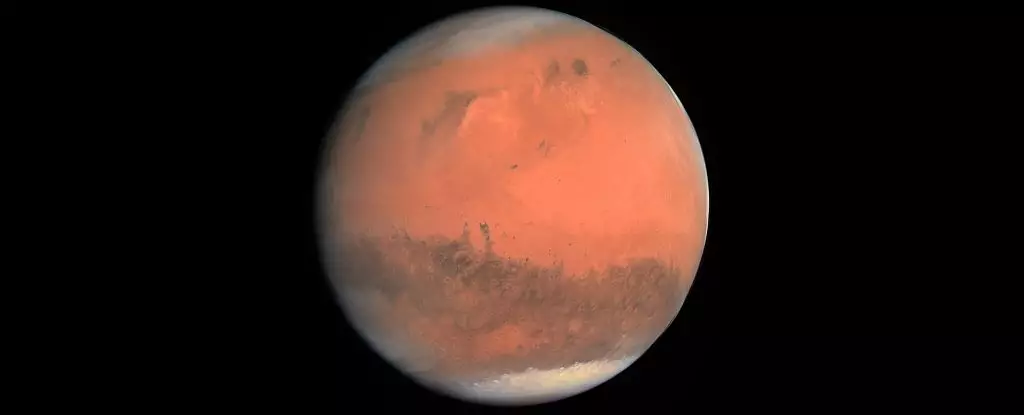Mars has long captured human imagination, its vibrant reddish hue a stark contrast to the other celestial bodies within our Solar System. This distinctive coloration has traditionally been attributed to iron oxide—often referred to as rust—accumulating on its surface over millennia. A prevailing notion among scientists was that the oxidation processes contributing to this striking color occurred due to dry conditions that facilitated the formation of hematite, a mineral known for its red appearance. However, recent studies suggest that this perspective might be overly simplistic, urging a deeper investigation into the interactions between water, minerals, and atmospheric conditions on Mars.
Recent research led by planetary geologist Adomas Valantinas and his team at Brown University introduces a reinvigorated hypothesis regarding the origin of Mars’ characteristic color. Contrary to prevalent theories, this study proposes that the presence of liquid water, rather than the absence of it, played a crucial role in the formation of Mars’s red surface. By creating a laboratory simulation to mimic the Martian dust environment, the research points to ferrihydrite—a mineral characterized by its quick formation in cool aqueous environments—as a significant contributor to the oxidation process that resulted in Mars’ signature rust color.
This revelation challenges our understanding of not only the Martian surface but also the historical presence of water on the planet. It adds nuance to our comprehension of the planetary geological history and the vital role that water has evidently played in sculpting Mars as we know it today.
The quest to uncover evidence of past water on Mars has been at the forefront of planetary science for decades. Numerous rover missions have unearthed compelling signs of a once-hydrated environment, suggesting that liquid water flowed on the planet’s surface at some point in time. Yet, the traditional understanding presented a paradox: while mineral analyses suggested that Mars was once wet, the dust samples collected up until now had not revealed any definitive signs of water activity.
This discrepancy led scientists to lean heavily towards hematite as the mineral responsible for Mars’ reddish appearance, given its affinity for developing in arid conditions. However, the introduction of ferrihydrite as an alternative player in this narrative alters the timeline of water’s presence—indicating that it might have existed longer than previously acknowledged and that oxidation processes occurred at an earlier stage of Mars’s history.
At the crux of the new findings are meticulous laboratory experiments wherein Valantinas and his team analyzed the characteristics of various iron oxides. By meticulously pulverizing different oxidized iron minerals into dust-sized particles, they were able to emulate Martian dust and compare it against observations made on the planet. The results demonstrated that the closest match was not hematite, but rather ferrihydrite with the chemical formula Fe5O8H · nH2O. This compelling evidence implicates ferrihydrite in the planet’s oxidation, thus reinforcing the hypothesis that Mars remained wet longer than commonly understood.
This methodological innovation showcases how terrestrial laboratories can be pivotal in resolving longstanding planetary mysteries, through the amalgamation of empirical data from rover missions and simulated analyses on Earth.
Implications for Mars Exploration
While these findings provide a paradigm shift in our understanding of Mars’ geological history, the implications extend far beyond mere scientific curiosity. The potential for further discovery lies ahead, with sample returns from Mars now on the horizon. As we await the collection of mineral samples from the Red Planet, the research serves as both a reminder and an invitation to reconsider the complexities of planetary evolution.
The evolving narrative around Mars opens discussions not only regarding its past but also its potential for future explorations, such as the implications for human colonization and the search for extraterrestrial life. If water was abundant for longer than we thought, the possibility for life—past or present—gains newfound credibility.
Mars remains an icon of intrigue within the cosmos, its russet tones and geological history a canvas for scientific exploration. The fresh perspective introduced by Valantinas and his team might compel us to rethink our stories about this enigmatic world, emphasizing the crucial role of water in defining its past. Going forward, as we navigate towards tactile exploration through upcoming missions, the ever-evolving tale of Mars beckons us to maintain an open mind, continually ready to adapt our understanding of the universe’s red planet.


Leave a Reply